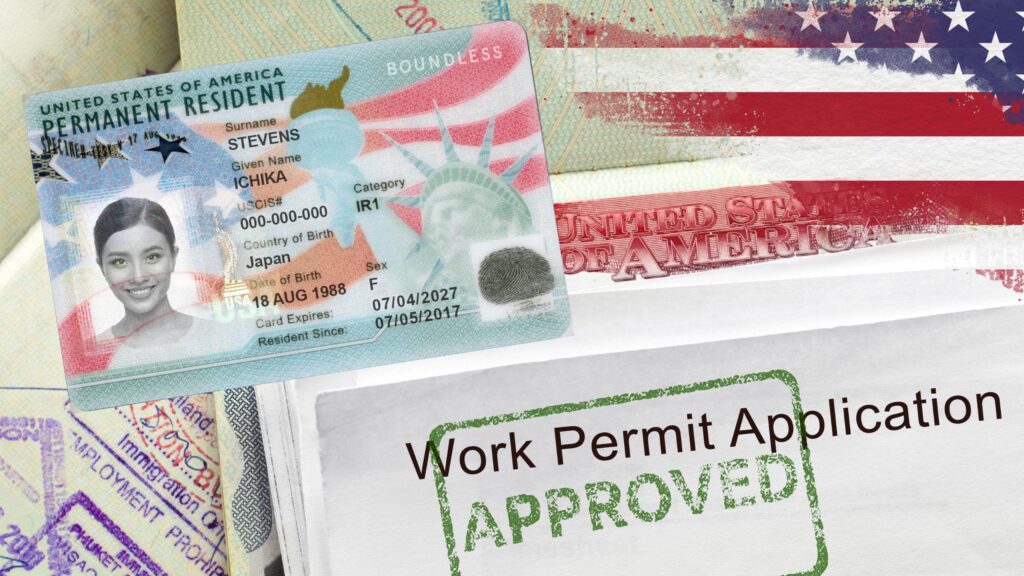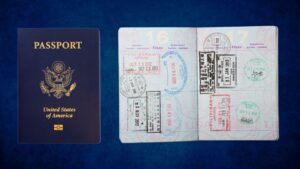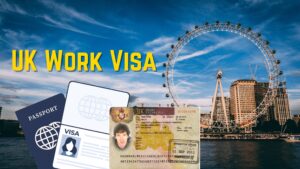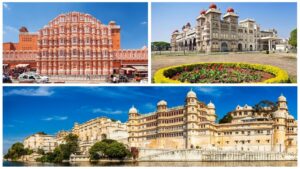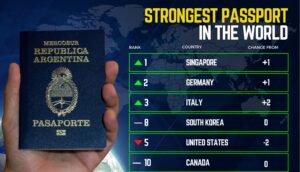US Permit/Work Visa
Citizens can apply for a US work visa as a non-immigrant after receiving an approval from the US Citizenship and Immigration Services (USCIS). The application for most types of non-immigrant US work visas requires the employer to file a petition to the USCIS and only the approved petitions qualify for the application process.
The visa application must be submitted along with the petition approval letter, completed application form, and specified documents. The US work visas are available under various categories based on the nature of work.
Work visa, the non-immigrant category also includes the visa for tourist, business, student, and speciality workers.
The Different Types of U.S. Work Visas
Temporary Non-Immigrant Visa
These employment visas are for people looking to work in the United States for a fixed period of time. Most often, a potential employer files a petition for this type of work with U.S. Citizenship and Immigration Services (USCIS) and prior to coming to the U.S., the employee would still need to apply for a visa. Within this qualification, there are many different categories of workers, which can be found on the USCIS website. Spouses and family of holders of these employment visas need to file for their own visas prior to coming to the U.S. Below are the most common type of non-immigrant work visas:
H Visas
H-1B visas are for people in a specified professional or academic field or with special expertise who have a college degree or higher or the equivalent in work experience. These visas have a residency cap of three years.
Eligibility:
- A job offer from a U.S. employer for a role that requires specialty knowledge
- Proof of a bachelor’s degree or equivalent in that field
- Your employer must show that there is a lack of qualified U.S. applicants for the role
H-2A and H-2B visas are for seasonal, or peak load, temporary workers in an agriculture (H-2A) or non-agricultural (H-2B) setting. Generally, these do not extend beyond a year.
H-3 are for those seeking training in any endeavor except graduate medical school or training; or training to meet the needs of those who require special education. This classification is for citizens who want training within the United States, but will be pursuing their careers outside of the U.S.
I Visas
I visas are for any eligible member of the foreign press including reporters, film crews, editors, and similar occupations, representing a foreign media outlet such as print, radio, film, or other foreign information media, when the outlet has a home office in a foreign country. For most, this is an indefinite visa as long as the holder is engaged in this profession for the same company.
L Visas
L Visas are for those who are temporarily transferring within a company at which they already work, either at the executive/management level (L-1A) or through a specialized expertise (L-1B). An L-1A visa comes with a three-year duration; L-1B has only one year.
O Visas
O visas are for those with extraordinary and exceptional abilities or achievements, across industries. O visas are also extended to those who travel with the person of extraordinary ability or a family member.
P Visas
These visas are for those who excel in performance, athletic, or artistic endeavors and the people who accompany these extraordinary performers. These are usually event-based durations.
R Visas
R visas are extended to non-immigrant religious workers who are members of a religious denomination that holds official non-profit status in the U.S. coming to work either directly for that denomination or an associated non-profit.
TN NAFTA
This permits qualified Canadian and Mexican citizens to seek temporary entry into the United States to engage in business activities at a professional level, under the North American Free Trade Agreement.
Permanent (Immigrant) Workers
Those with the right job skills — and their spouses and children — can apply for the roughly 140,000 employment-based green cards available each year. Permanent residence in the U.S. can be obtained through the right combination of education, expertise, eligibility, and skill set. Most of these visas call for an existing offer of employment from an employer who has the proper U.S. Department of Labor certification, verifying that there are both insufficient workers with this skillset within the United States, and the hiring does not take a job away from a U.S. citizen. Called “labor certification,” this is done through ETA Form 9089 (“Application for Permanent Employment Certification”).
There are five key types of employment-based visas:
First Preference EB-1
EB-1 covers those with “extraordinary ability” such as business professionals, academics and researchers, scientists, the arts, or athletics. This type of visa does not require labor certification. Family of EB-1 visa holders may apply for admission to the U.S. on E-14 or E-15 immigrant status, respectively, if that person has an approved I-140 (green card) form.
Second Preference EB-2
EB-2 visas are available to professionals holding an advanced degree or foreign equivalent; or who can prove at least ten years experience in a field; or those whose employment is in the national interest of the U.S. For all but the third category of eligibility, labor certification must be obtained. Family of EB-2 visa holders may apply for admission to the U.S. through E21 or E22 forms, if that person has an approved I-140 (green card) form.
Third Preference EB-3
EB-3 visas are available to those holding a bachelor’s degree, or foreign equivalent, as well as skilled and unskilled laborers who have a non-temporary offer of employment from a U.S. employer. For each eligibility category within EB-3, labor certification must be obtained. Family of EB-3 visa holders may apply for admission to the U.S. through specific spouse or child forms listed, if that person has an approved I-140 (green card) form.
Fourth Preference EB-4
EB-4 visas are a specialized category of visa, eligibility to which includes but isn’t limited to: certain religious workers, employees of U.S. foreign service posts, retired employees of international organizations, and noncitizen minors who are wards of courts in the United States. Labor certification is waived for this type of visa. Some families may be eligible for admission.
Fifth Preference EB-5
EB-5 visas cover the Immigrant Investor Program. These are available to people who make either an investment of 1.8 million USD in a new commercial enterprise that employs at least 10 full-time U.S. workers, or 900,000 USD in a new commercial venture in a targeted employment area that employs at least 10 full-time U.S. workers. Labor certification is waived for this type of visa. Under this program investors and their family are eligible to apply for green cards.
Boundless offers unlimited support from our team of immigration experts, so you can apply with confidence and focus on what’s important, your life in the U.S.
Student and Exchange Visitors
These visas cover three types of students: academic students, vocational students, and those enrolled in educational or cultural exchange programs. These are not immigrant visas.
F Visas
F-1 visas are for academic students enrolled at accredited academic institutions. As long as a course of study is maintained, students may work. Students cannot work off-campus during the first academic year, but may accept on-campus employment subject to conditions and restrictions. After the first academic year, F-1 students can engage in three types of off-campus employment:
- Curricular Practical Training (CPT)
- Optional Practical Training (OPT) (pre-completion or post-completion)
- Science, Technology, Engineering, and Mathematics (STEM) OPT
F-2 visas are available for the family of the student, including spouse and children. F-3 visas are available for Canadian or Mexican students who commute.
M Visas
M visas are available for students at vocational or other recognized nonacademic institutions, other than language training programs (those require an F visa). M-2 visas are available for the family of the student, including spouse and children. M-3 visas are available for Canadian or Mexican students who commute.
J Visas
J visas are available for those involved in work- and study-based programs, like au pairs, camp counsellors, trainees, interns and more. Programs must promote cultural exchange and applicants must meet eligibility criteria, including English language proficiency. J-2 visas are used for dependents of the J-1 visa holder.
Not sure which visa is right for you? Take our free assessment to get a customized plan.
Temporary Visit for Business
These visas are for very short-termed business purposes. If a person were, for example, negotiating a contract, attending a convention, or settling an estate, they would travel under this type of visa.
B-1 Visas
B-1 visas are for those conducting limited, short-term business in the United States. These demand a specific period of time, and are usually given for a one- to six-month period, with possible extension of an additional six months. It is rare if these visas extend beyond one year. Family of B-1 visa holders are not eligible to travel under these visas; they must obtain their own B-1 visas to travel.
GB Temporary Visitor to Guam
GB Temporary Visitor to Guam visas cover the U.S. territories of Guam and the Northern Mariana Islands. Visa holders may be traveling for business or pleasure, but they need to be traveling with a return ticket. The stay cannot exceed 45 days.
US Work Visa Cost
| Visa Type | Application Fee (in US dollars) |
|---|---|
| Business/Tourist (B) | $140 |
| Transit (C-1) | $140 |
| Ship/Airline Crew (D) | $140 |
| Student (academic) (F) | $140 |
| Journalist and Media (I) | $140 |
| Exchange Visitors (J) | $140 |
| Student (vocational) (M) | $140 |
| Victim of Human Trafficking (T) | $140 |
| NAFTA Professionals (TN/TD) | $140 |
| Victim of Criminal Activity (U) | $140 |
| Temporary Workers/Employment or Trainees (H) | $205 |
| Intracompany Transferees (L) | $205 |
| Persons with Extraordinary Ability (O) | $205 |
| Athletes, Artists & Entertainers (P) | $205 |
| International Cultural Exchange (Q) | $205 |
| Religious Worker (R) | $205 |
| Treaty Trader/Investor, Australian Professional Specialty (E) | $315 |
| Fiancé(e) or Spouse of U.S. citizen (K) | $265 |
How to Apply for a US Work Visa Online?
The application process may seem complicated, but let’s break it down into easy steps. Here’s how you can get your US work visa:
Determine the Visa Type
The first step is to determine the appropriate work visa category based on your qualifications, job offer, and purpose of travel. Common work visa categories include H-1B, L-1, O-1, and TN visas.
Get a Job Offer and Employer Sponsorship
To obtain a work visa, you generally need a job offer from a US employer who is willing to sponsor your visa application. The employer must file a petition with the US Citizenship and Immigration Services (USCIS) on your behalf.
Labor Condition Application (LCA)
For H-1B and E-3 visas, the employer must submit a certified Labor Condition Application (LCA) to the Department of Labor (DOL). The LCA certifies that the employment will not adversely affect US workers’ wages and working conditions.
Complete Form DS-160
Once the employer’s petition is approved, you need to complete Form DS-160, the online nonimmigrant visa application. This form collects your personal and background information.
Pay the visa fee
Pay the required visa application fee, which is typically non-refundable. The fee amount varies depending on the visa category.
Establish a time for the visa interview
After submitting the DS-160 and paying the fee, you must arrange a time for the visa interview at the closest US embassy or consulate in India. You can do this through the US embassy’s website or the visa service provider’s website.
Schedule a Visa Interview
On the scheduled date, attend the visa interview at the US embassy or consulate. Be prepared to present the required documents, such as your passport, DS-160 confirmation page, visa fee payment receipt, employer’s petition approval notice, educational qualifications, and any supporting documentation.
Biometric data collection
During the visa interview, your fingerprints may be collected as part of the biometric data collection process.
Visa processing and decision
After the interview, your application will undergo further processing by the embassy or consulate. The processing time can vary, so it’s important to check the estimated processing times on the embassy’s website.
Visa issuance
If your visa application is approved, your passport will be returned to you with the visa affixed. You can then make arrangements for travel to the USA for work purposes.
Common Reasons for Visa Denial
Incomplete or incorrect application
Failing to provide all the required information or submitting an application with errors or omissions can lead to visa denial. It is crucial to accurately complete the visa application form and follow all instructions.
Insufficient proof of financial stability
Applicants must demonstrate that they have adequate financial resources to support themselves during their stay in the USA. Failure to provide convincing evidence of financial stability can raise concerns about the applicant’s ability to cover travel, accommodation, and other expenses.
Lack of supporting documents
Supporting documents, such as employment letters, invitation letters, educational certificates, and proof of ties to the home country, play a crucial role in strengthening the visa application. Failure to provide sufficient supporting documents or submitting inadequate evidence can result in a visa denial.
Previous visa violations or overstays
Individuals who have violated US immigration laws in the past, such as overstaying a previous visa or working without authorization, may be deemed ineligible for a new visa. Consular officers carefully review the applicant’s immigration history, and previous violations can significantly impact their chances of obtaining a visa.
Criminal records or security concerns
Applicants with a criminal record or involvement in activities that raise security concerns may face visa denial. The US government prioritizes national security, and individuals with criminal records or security risks may be deemed ineligible for a visa.
US Work Visa Validity
The validity of USA work visas varies depending on the type of visa and individual circumstances. Typically, work visas are granted for a specific period, ranging from a few months to several years. The most common work visa, the H-1B visa, is initially granted for up to three years and can be extended for an additional three years. Other work visas, such as the L-1 visa or O-1 visa, may have different validity periods. It is important to note that work visas are typically tied to specific job offers and may be subject to renewal or extension processes to maintain legal status in the USA.
Obtaining a work visa (permit) for the USA is a crucial step for individuals seeking employment opportunities in the country. Understanding the different types of work permits, associated costs, and processing times helps applicants choose the right visa category. The application process requires careful documentation and adherence to immigration laws to ensure approval.
For a smooth and hassle-free experience, it’s essential to stay updated with the latest immigration policies, avoid common mistakes, and seek professional guidance if needed. Whether you’re applying for a temporary work visa or permanent employment authorization, planning ahead will improve your chances of success.
FAQs
How do I get a work permit visa for the USA?
To obtain a work permit (Employment Authorization Document, EAD), you must:
- Have a qualifying visa status (such as an asylum applicant, student visa holder, or spouse of a work visa holder).
- File Form I-765 with U.S. Citizenship and Immigration Services (USCIS).
- Provide required documents (passport, I-94, visa, etc.).
- Pay the application fee (if applicable).
- Wait for USCIS approval.
Who is eligible for a U.S. work permit?
Eligibility depends on visa status. Common eligible groups include:
- Green card applicants with pending status.
- Spouses of certain work visa holders (e.g., L-2, H-4 with an approved EAD).
- Asylum seekers or refugees.
- Students with Optional Practical Training (OPT).
How long is a work visa in the USA?
The validity depends on the visa type:
- H-1B: Up to 6 years (initial 3 years + 3-year extension).
- L-1: Up to 7 years (for executives).
- O-1: Initially 3 years, renewable annually.
- TN (for Canadians/Mexicans): Up to 3 years, renewable.
Who is eligible for the H-1B visa?
To qualify for an H-1B visa, you must:
- Have a U.S. employer sponsor.
- Hold a bachelor’s degree or higher in a specialized field.
- Work in a specialty occupation (e.g., IT, engineering, healthcare, finance).
Learn about permanent work visas
Permanent work visas (Green Cards) include:
- EB-1: Priority workers (e.g., outstanding professors, researchers, executives).
- EB-2: Professionals with advanced degrees or exceptional ability.
- EB-3: Skilled workers and professionals.
- EB-4: Religious workers, certain broadcasters, translators.
- EB-5: Investors who invest at least $800,000 and create jobs.
How to sponsor a permanent worker for a U.S. job
- The employer files a PERM labor certification with the Department of Labor.
- Once certified, the employer files Form I-140 (Immigrant Petition for Alien Worker) with USCIS.
- If approved and a visa is available, the worker applies for a Green Card (Form I-485 or Consular Processing).
What is the minimum H-1B salary?
The minimum salary depends on the job location and position. Generally, the prevailing wage is determined by the Department of Labor and varies by occupation and location.
How many years is H-1B valid?
- Initially 3 years.
- Can be extended for another 3 years, totaling 6 years.
Can H-1B get a Green Card?
Yes, H-1B holders can apply for a Green Card through employment-based sponsorship. Many follow the EB-2 or EB-3 pathway.
How much is the H-1B visa fee?
The H-1B visa fees include:
- Basic filing fee: $460
- Fraud prevention fee: $500
- Public Law 114-113 fee: $4,000 (for large employers)
- ACWIA training fee: $750-$1,500
- Premium processing (optional): $2,805
Is it hard to get an H-1B visa?
Yes, due to:
- H-1B lottery system (only 85,000 visas issued per year).
- High demand from global professionals.
- Strict eligibility and documentation requirements.
What are the disadvantages of the H-1B visa?
- Lottery-based selection.
- Tied to employer sponsorship (job loss may require a transfer or exit).
- Limited extensions beyond 6 years unless Green Card is in process.
- Dependent spouses need separate work authorization (H-4 EAD required).
Is H-1B transfer easy?
Yes, if the new employer files a H-1B transfer petition before you leave the current employer. No lottery is needed for a transfer.
Who can sponsor an H-1B visa?
Any U.S. employer willing to meet H-1B requirements, including:
- IT, healthcare, finance, and engineering companies.
- Universities and research institutions.
- Startups (if they meet financial and operational criteria).
Who pays for H-1B?
The employer pays all mandatory H-1B visa fees. Employees cannot reimburse the employer for these costs.
Who approves the H-1B visa?
- USCIS: Approves the H-1B petition.
- U.S. consulate: Grants the H-1B visa stamp (if outside the U.S.).
What is the success rate of the H-1B visa?
Success rates vary by year. In recent years, approval rates have ranged between 75%-85% after selection in the lottery.
What happens after 6 years of H-1B?
Options include:
- Green Card Process: If PERM and I-140 are filed before the 6th year.
- L1 or O1 Visa: If eligible.
- Exit the U.S.: Stay outside for 1 year before reapplying for a fresh H-1B.
